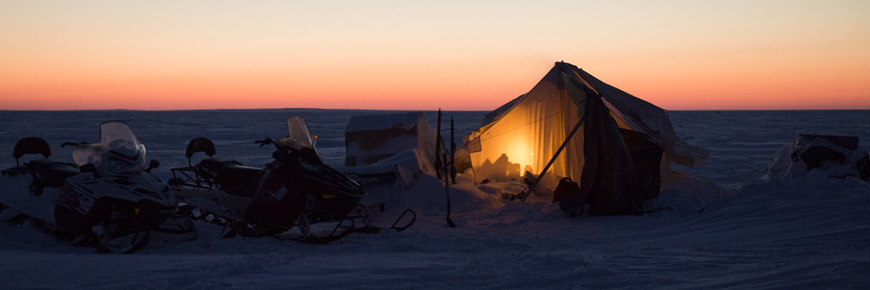
The Franklin Expedition and climate change
Wrecks of HMS Erebus and HMS Terror National Historic Site
The Arctic of John Franklin’s time was not the Arctic of today.
Franklin and his men set out for the Northwest Passage in 1845. At that time, civilization had just started to use fossil fuels on a large scale. Industry was generating small amounts of greenhouse gases compared to now. The human influence on climate had just begun.
Today, more than 170 years later, we know that climate change has taken its toll on the Arctic. Sea ice coverage, for example, is shrinking at a rate not seen in the last 1400 years.
According to the Canadian Ice Service, summer sea ice coverage in the Northwest Passage has been declining generally since scientists starting taking measurements in 1968. In some years, starting in 2012, the sea ice coverage in the Northwest Passage goes down to zero.
At this rate, some experts predict that the Northwest Passage will be generally ice-free in the summers by 2030. To the men of Franklin’s expedition, an ice-free journey would have been a beachside dream.
But the tricky thing about climate change is that within large-scale trends, you find small-scale variations. Even today, there are summers when the Northwest Passage can have a fair amount of ice.
It’s very, very important to Inuit, because it’s our ‘qaujiti,’ which means we were born to it and we’ve always lived in it…If the sea ice doesn’t form anymore, although we still get snow, our life would drastically change.
This variability probably held true in Franklin’s time as well. In 1985, the Canadian scientist B.T. Alt and her colleagues examined ice cores taken from glaciers and concluded that the Arctic was in a cooling phase during Franklin’s time. Conditions would have been unusually harsh for an Arctic expedition. Franklin’s ships would have had to fight through the castled pack ice that had built up over decades.
And yet the expedition managed to travel as far south as the northern tip of King William Island. This suggests that the sea ice must have been unusually light along some stretches of the route.
All this tells us that the story of Arctic climate, like the story of the Franklin Expedition itself, includes many smaller stories. We need to keep exploring, using both scientific research as well as human records such as Inuit oral histories, to unravel all the stories.
Related links
- Date modified :